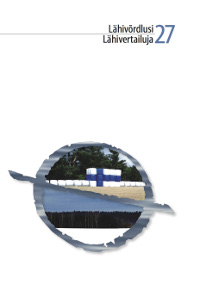Keelekasutusmustrid verbist paremal: morfosüntaktiline ja leksikaalsemantiline varieerumine
Patterns of language use found on the right periphery of the verb: Morphosyntactic and lexico-semantic variability
Author(s): Pille EslonSubject(s): Morphology, Syntax, Semantics
Published by: Eesti Rakenduslingvistika Ühing (ERÜ)
Keywords: semantics; morphosyntax; patterns of language use; the Estonian language;
Summary/Abstract: The article discusses the patterns of language use of the Estonian literary language found on the right periphery of the verb. The discussion focuses on three-component structures both including and not including an adverb. On the basis of structures including an adverb both free and bound, or only just bound modifiers will joint to form lexico-grammatical units – analytical particles (e.g. just and ka will gravitate together to form a semantic-syntactic and phonological whole ei ole Ju ka engine), conjunctions (e.g. co-ordinating – correlative compound conjunction Mitte adult (enema üldse, Nii palju) .., valid (Kui) expressing concession), patterns (e.g. compound past tense forms), analytical expressions (e.g. compound words, phrasal verbs) and analytical constructions (e.g. compound verbs and verb syntagms). Te patterns not including an adverb are characterized by collocations and idiomaticity (e.g. terrane tüdruk, võõras very, also idiomatic expressions). Tese exemplifies two tendencies characteristic of the use of the Estonian language: the former refecting the principle of the agglutinative model – joining of morphemes and lexemes (processes linked to grammatisation and lexicalizing), the latter showing lexicosemantic restrictions in the formation of multi-word units. The patterns of the right periphery context of the verb have specific textual functions, which are based on the morphosyntactic and lexico-semantic restrictions of the fixed word-order structures. The actual links between the structural components, or the rules of use, are the narrower the freer language functioning is perceived to be. From this point of view, the patters containing an adverb and analytical units play an important part in the regulation of the so-called free word order of the Estonian language and in text generation. Once the patterns are established in a particular text function, components of those structures can be used as stereotypes and to form new stereotypes (e.g. times sell aastal, old sell Duvel; on kord juba, tuleb kord jälle).
Journal: Lähivőrdlusi. Lähivertailuja
- Issue Year: 2017
- Issue No: 27
- Page Range: 17-64
- Page Count: 48
- Language: Estonian

